
Outdoor Winter Living Spaces We Love
Last Updated: Apr 7, 2025There is nothing more gratifying than an unexpected warm spell in the middle of February. When you can finally open the windows, air out your house, and spend some time taking in a bit of sunshine and warmth on your front porch. Unfortunately, global climate change doesn't necessarily translate into longer warm spells in the heart of winter. Instead, some studies find that climate change might lead to harsher winter weather in large portions of the United States. With the right design, however, it is entirely possible to enjoy outdoor living areas during the wintertime - without having to put on eight layers of clothing every time you open your front door. Below, we offer a few ideas for how to design and construct winter-friendly outdoor living areas.
Table of Contents
- What Health Issues Can Arise from Spending the Winter Indoors?
- Some Ideas for Outdoor Winter Spaces
What Health Issues Can Arise from Spending the Winter Indoors?
When the temperatures dip down into the teens, a hermetically closed and centrally heated home can certainly feel like a needed luxury. However, several health problems can arise with spending long months indoors.
Increase in Probability of Colds and the Flu
The flu doesn't only occur during the winter months. Dozens of different viruses can cause the common cold and more dangerous illnesses (like COVID-19, for example). And all of them are present throughout the year. However, because people tend to spend much more time indoors during the winter, the CDC reports that the peak months of flu activity almost always occur between December and March. The more time we spend indoors in the company of other people, the higher the probability of catching someone else's virus.
Seasonal Affective Disorder (SAD)
SAD is another common winter health problem that can lead to severe bouts of depression and anxiety. An estimated ten million Americans suffer from this disorder. SAD has been linked to a lack of Vitamin D (from sunlight) and fresh air that comes with spending a healthy amount of time outdoors.
Unhealthy Indoor Air Quality
Winterizing your home can certainly help to cut back on your heating bill. But, a well-sealed home can also lead to unhealthy indoor air quality. HRV and ERV systems can help to introduce a steady supply of fresh air into your home, though many houses don't have these systems in place. Heating sources like oil, gas, kerosene, coal, and firewood can introduce potentially dangerous pollutants and VOCs into your home. This is especially true if your heating unit hasn't received regular maintenance. Moreover, decreased ventilation that comes through weather stripping and improving your insulation will keep bacteria, viruses, mold, dust, and other common indoor pollutants inside your home. The result is the feeling of "stuffiness" that often accompanies air inside your home. So, a tight home needs to ensure that it has enough fresh air through an HRV or ERV or other types of ventilation.

Some Ideas for Outdoor Winter Spaces
You don't have to compromise your home's energy efficiency through open windows during the wintertime to enjoy a bit of fresh air. Your backyard patio might not be a great place to host a dinner party when it's below freezing outside. Fortunately, there are other ways to design outdoor living areas that are completely usable during the wintertime.

Attached Greenhouses
There is no better way to make your body and mind think that spring is just around the corner than through spending some time in the garden. Of course, trying to plant flowers or vegetables in frozen soil is not a recipe for success. A simple glass greenhouse added onto the southern side of your home, however, should be able to maintain warm enough temperatures to let you keep your green thumb active throughout the winter.
Passive solar greenhouse design maximizes the amount of solar energy that can be captured. In colder regions, insulated walls will maintain captured heat so that plants can thrive, and you can enjoy temperatures that will resemble springtime - even during the middle of January. If you want to get creative, consider setting up a water-based hydroponic growing system. The water in these growing systems will act as a thermal mass that passively warms up during the day and slowly radiates that captured heat into the greenhouse when the temperature drops at night.
Besides enjoying a much more pleasant temperature while staying active in your attached greenhouse, windows and fans can be added between your home and the greenhouse. Installing them will enable your house to also benefit from the passive solar heating captured by the greenhouse. Your home's windows or doors should be shut at night when the temperature drops but can be opened during the day to let that pleasant heat filter into your home.
Heating and Cooling
Find a wide variety of researched and vetted heating and cooling products that help address home comfort.

Stiebel Eltron CON 300-2 Premium Wall-Mounted Convection Heater - 202030
Stiebel Eltron
Out of Stock
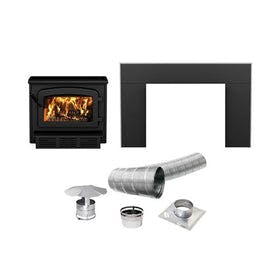
Drolet Escape 1800-I Wood Stove Insert Trio (25ft) DB03127K
Drolet
Out of Stock
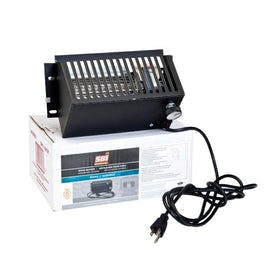
Drolet Ultra-Quiet 100 CFM Blower With Variable Speed Control - AC02050
Drolet
In Stock
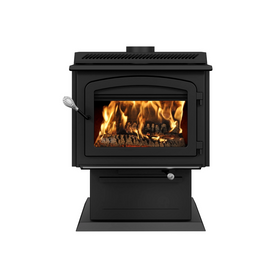
Drolet HT-3000 Wood Burning Stove DB07300
Drolet
Out of Stock

Drolet Escape 1500-I Wood Insert Trio (25 FT) DB03137K
Drolet
Out of Stock

Drolet Escape 1800-I Wood Insert DB03125
Drolet
Out of Stock
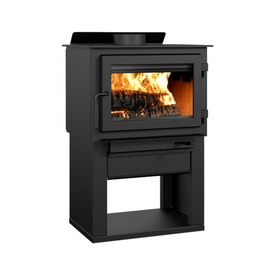
Drolet Deco II Wood Stove DB03205
Drolet
In Stock

Stiebel Eltron CON 150-1 Premium Wall-Mounted Convection Heater - 202026
Stiebel Eltron
In Stock

Drolet Escape 1800-I Wood Insert Trio (35 FT) DB03128K
Drolet
Out of Stock
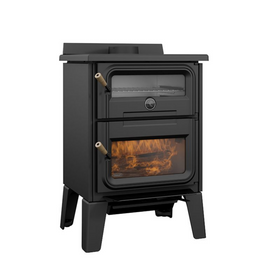
Drolet Bistro Wood Burning Cookstove DB04815
Drolet
In Stock

Passive Solar Sunrooms and Patios
Similar in design but different in purpose, passive solar sunrooms also offer a naturally heated area attached to your home. A solid wall of glass that preferably faces due south along with a glass roof will capture the sunlight that shines low in the sky. Insulated side walls will keep that heat inside the sunroom or patio. More technologically advanced sunrooms will include a thermostat and fan that will automatically turn on when temperatures inside the sunroom reach a specific temperature. This addition will thus offer a free source of heat to your home.
A passive solar sunroom should also add a unique effect to your home's internal lighting. Both the vertical glass of the south-facing wall and the roof's angled glass will capture enormous amounts of heat and light during the winter. Then, shutters can be used to block the heat of the summer sun.

Fire and Heaters
It's not always necessary to enclose an outdoor living area during the wintertime to enjoy time outdoors. For example, you can quickly build a DIY wood fire pit on your outdoor deck or patio. Or, you can choose a gas fire pit such as those designed by Fire Pits Direct. These options offer a source of heat to keep you warm during winter evenings.
Gas or electric patio heaters deliver a comfortable source of direct heat that will warm up specific outdoor areas. Portable patio heaters such as those offered by FireSense will allow you to move the heater to provide warmth within any 20-foot diameter at your patio. Tabletop outdoor heaters look like table lamps. These products deliver enough heat to allow you to lounge on your favorite outdoor patio chair while enjoying a good book.

Outdoor Spa
An outdoor Jacuzzi or hot tub is by far the best way to enjoy the fresh air of winter. Sitting in hot, bubbling water while snowflakes gently fall around you is the essence of luxury and is an easy addition to any outdoor porch, deck, or patio. Because you can expect an uptick in your usage and power bill resulting from a new hot tub, you might want to opt for one that is all about energy efficiency. Look for a variable speed pump and a greater degree of insulation around the tub are two key things to help with that. Hydropool Hot Tubs is one example of a more energy-efficient hot tub currently on the market. One of its innovations is a thermal shield system that utilizes heat waste through a unique heat exchange system. As a result, the company says that it gets 100-degree water for only a couple of added pennies per day on your heating bill.
Tobias Roberts
Tobias runs an agroecology farm and a natural building collective in the mountains of El Salvador. He specializes in earthen construction methods and uses permaculture design methods to integrate structures into the sustainability of the landscape.
